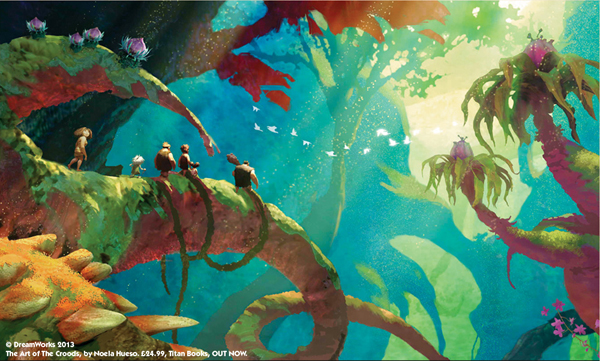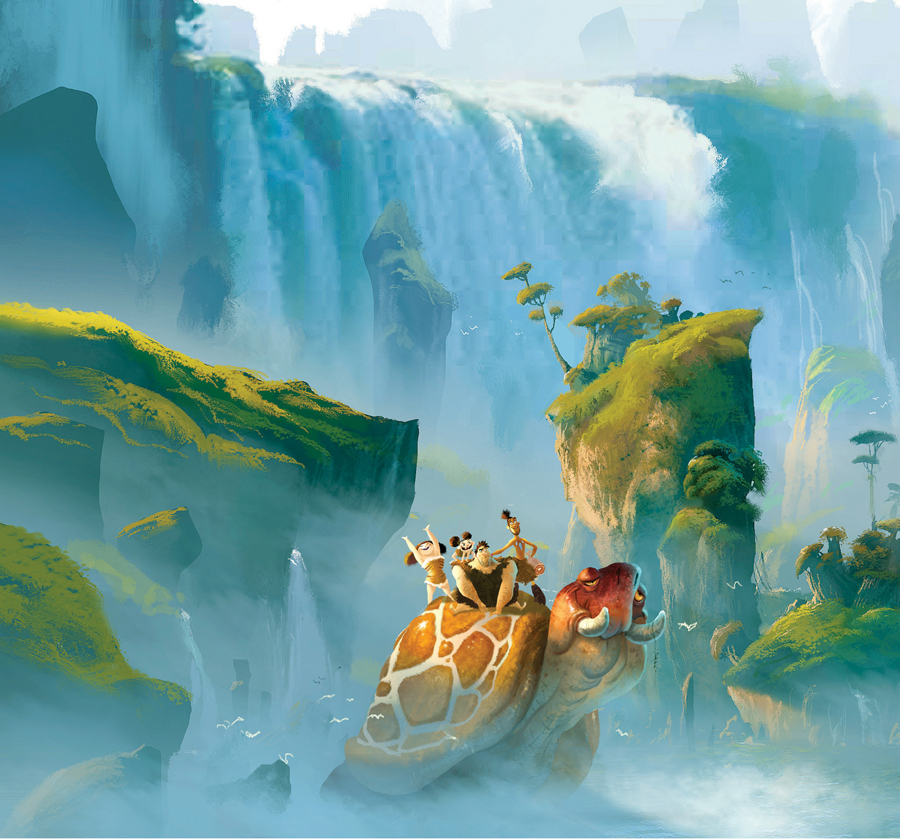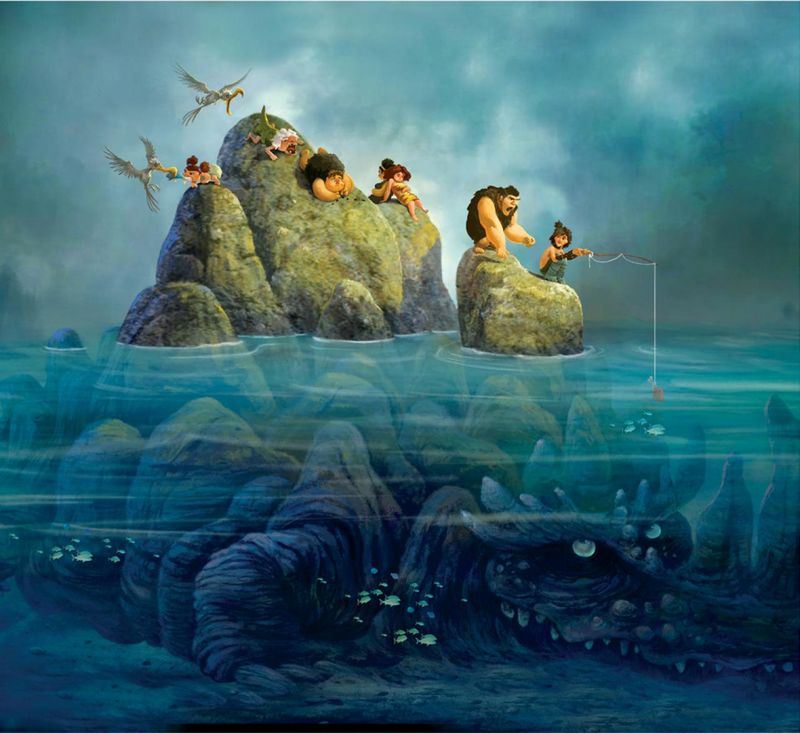Book Review: The Art of the Croods
Posted 7 years ago by Rob Lammle Books
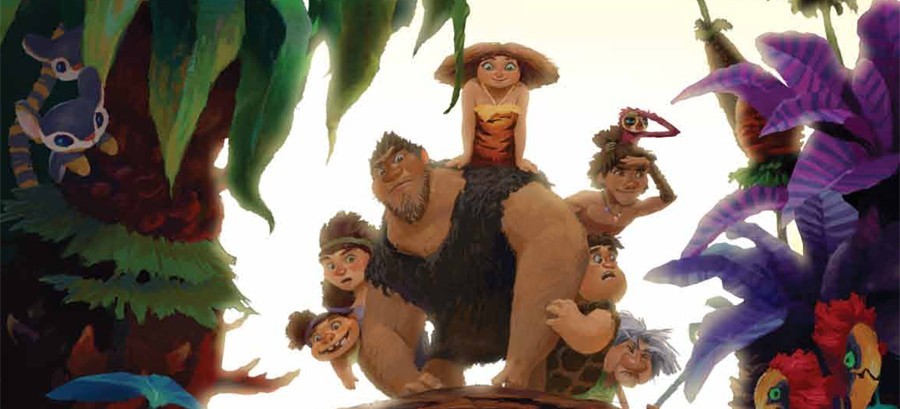
One of the great things about animation is its ability show us people, places, and things we’ve never dreamed possible. Distant planets, mythical lands, or even more grounded subjects, like ancient history, can come alive thanks to the work of a team of dedicated artists and animators. And when the canvas is so limitless, it’s great to see when creative minds really go for it and bring us something unique.
When the artists sat down to start visualizing the prehistoric world of the new Dreamworks Animation film The Croods, it would have been very easy for them to fall back on conventional caveman tropes. Naturally, the characters could look like they were pulled straight from The Flintstones, who would anachronistically interact with run-of-the-mill dinosaurs like Triceratops and T. Rex, and they’d live in a world filled with big rocks, rumbling volcanoes, and bubbling tar pits. While there are still echoes of these old standbys, for the most part, The Croods is a feast for the eyes. Thankfully Titan Books has released The Art of the Croods, so you can visit the best part of the movie – the art design – anytime.
Virtually all modern Art of books (from Titan or any other publisher) contain the same basic content: character design, set design, and a few bits on special effects. The Art of the Croods is no exception, with the early part of the book dealing with the main characters, including snippets of text from the actors, the director, and the artists that brought the character to life. It’s always nice to see how a character evolved over time and hear some of the insights into why this design worked and that one didn’t, or the things they wanted to emphasize with the character’s physical appearance. In The Croods, perhaps the most important character for the artists to get right was Eep, the teenage daughter, played by Emma Stone. She can’t be Disney Princess pretty because she’s a Neanderthal, but she also can’t be hideously ugly either because that just won’t look good on a one-sheet or an action figure. So seeing the back-and-forth in her design was really interesting. In addition, the animals, what with their kooky combinations of familiar species in a sort of semi-evolutionary phase, makes for a lot of really fun “What if?” designs that are scattered throughout the book.
But a majority of the book deals with the design of the world of The Croods, and this is where it really shines. With vistas like the primordial jungle and it’s moss-covered trees and roots as big as Buicks, or the Tundra where the great land whales roam, or the vast fields of pink and yellow coral that tower into the sky, there’s no shortage of eye candy to behold. The book smartly breaks down each of the major landscapes into the scenes that play out there, including the flora and fauna of the area. This helps keep everything contained within the same context, as well as shows the whole process of developing this particular environment including the extreme attention to detail. After looking at the concept art, it’s amazing how many of these designs actually wound up in the final film.
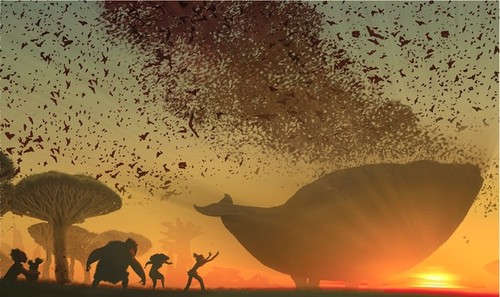
Although it’s not uncommon for Art of books to feature plenty of small drawings and full-page photos or paintings, one feature that really makes this book stand out are the gatefold pages. A handful of times throughout the book, there are two-page spreads that unfold to reveal a four-page spread underneath. My favorite one would have to be in the animal design section, where each little drawing is about 1 or 2-inches square over a two-page spread. Unfolding these pages reveals a four-page spread of early caveman designs. The gatefolds are a nice touch that you don’t see very often.
The last section of the book deals with the deconstruction of one of the final scenes in the movie. There are a few insights into the storyboarding process and character animation, as well as quite a bit of tech-heavy information about the creation of CG models and 3-D imaging. I loved the storyboarding and character stuff, but the rest didn’t really hold my interest; it all feels very detached for me. I appreciate the work the animators and effects people do, but it just doesn’t have that same personal touch that the hand-drawn storyboards and character pose sheets do. To each his own, though.
If you liked The Croods (or, like me, you found it fun but forgettable), you’ll appreciate The Art of the Croods even more. It’s a great showcase for the design of the film, and gives us a revealing glimpse into the creative process to make a world like this come alive.
The Art of the Croods is now available at Amazon.com and other fine booksellers.
